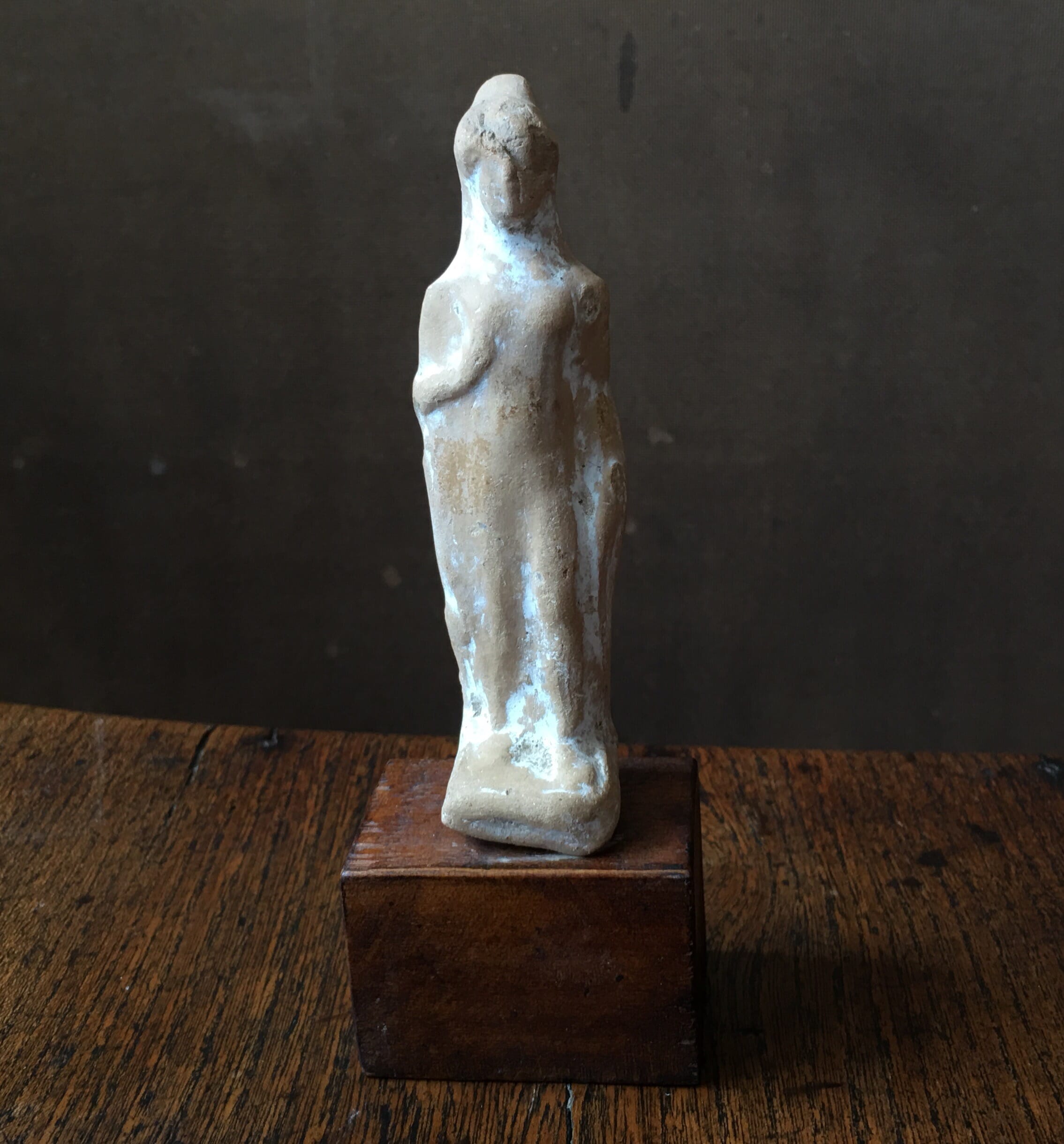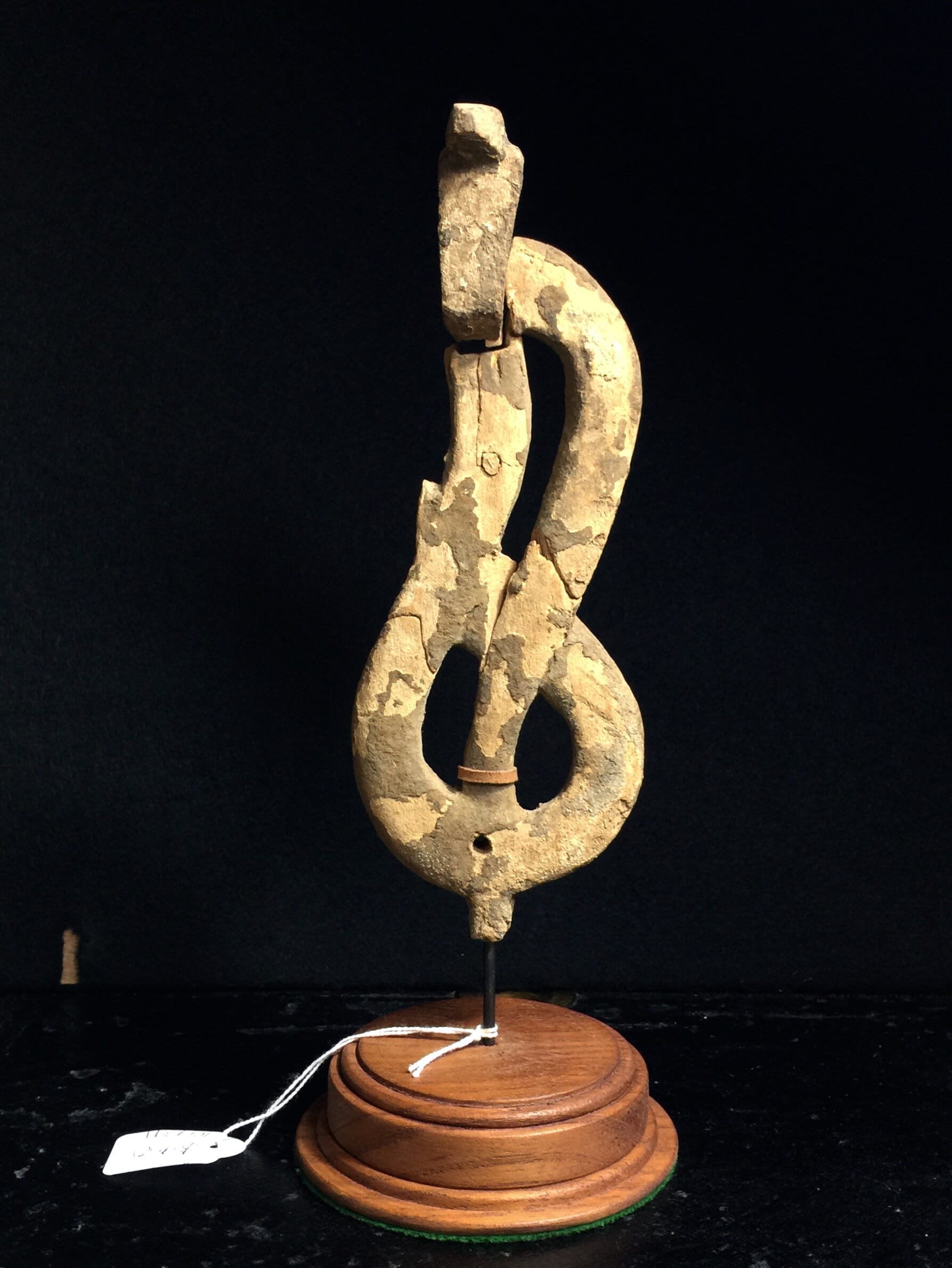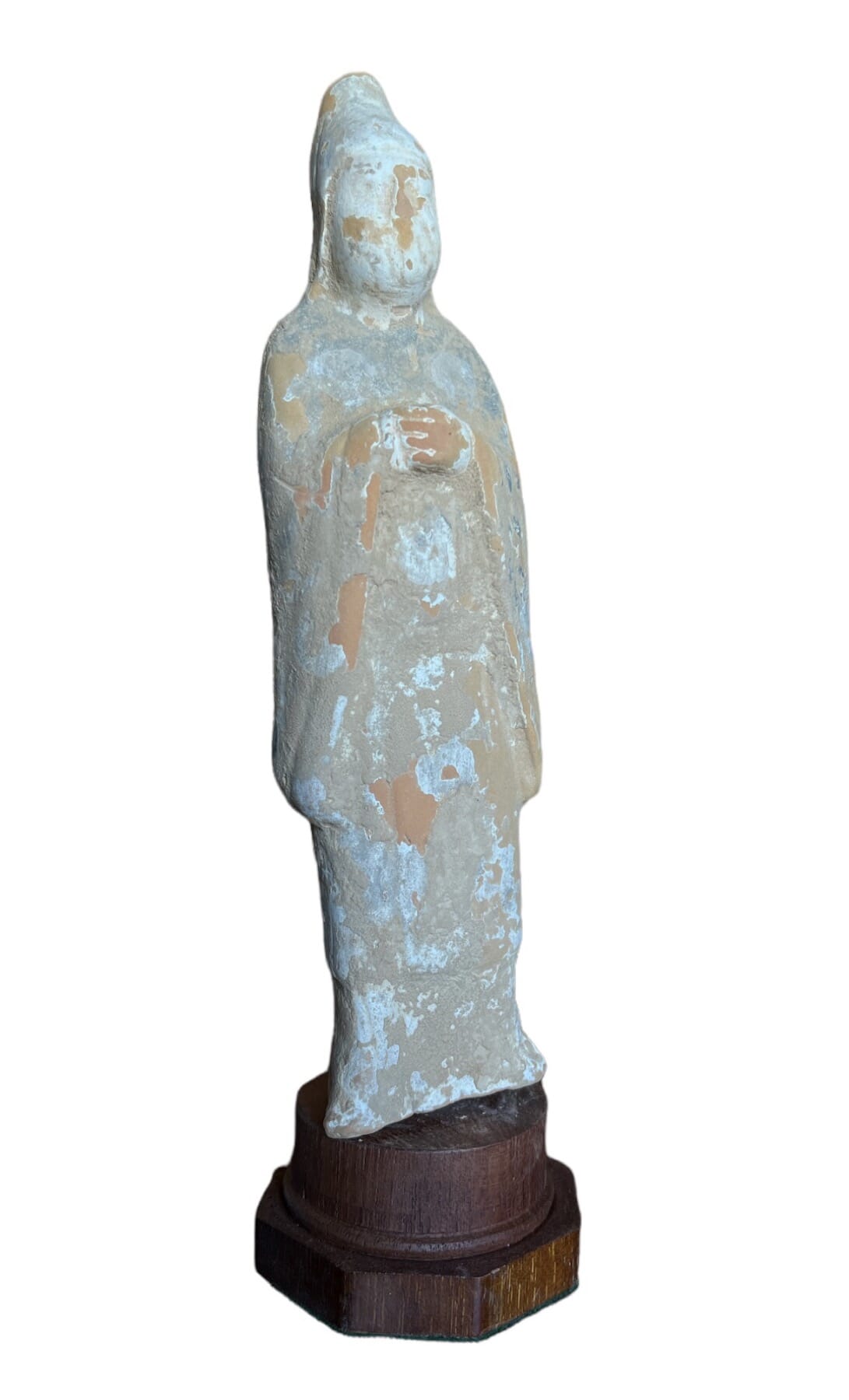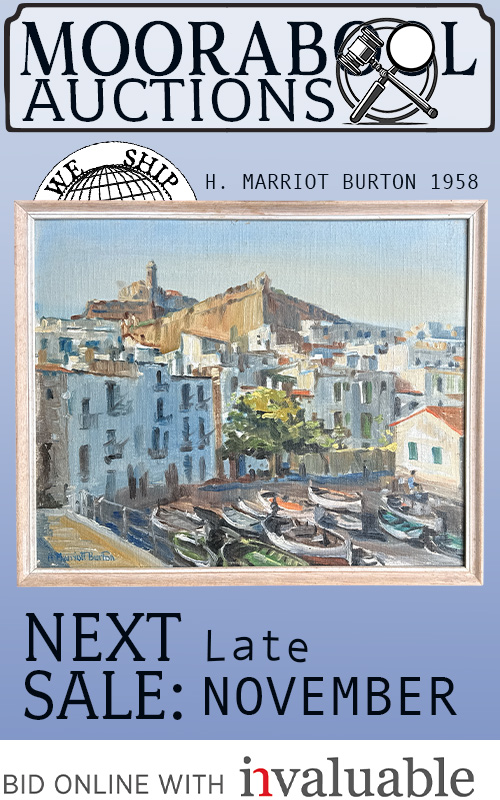Egyptian style brass box, fine detailed with enamel background, c. 1925
Sold
Egyptian style brass box, finely detailed with top panel influenced by the scene on the back of Tutankhamun’s throne, complete with panels of pseudo-hieroglyphics including royal cartouche, the sides with two repeating panels featuring an arched reserve containing a striding lion in two, a pair of kneeling men in the other two, the wood-lined interior with plush Egyptian-style figural fabric panels.
Circa 1925
10x10cm, 5cm high
small flaws, hinge with old solder repair, the enamels retouched
A detailed product made in the aftermath of the discovery & opening of King Tutankhamun’s tomb in Egypt in late 1922; the various elements of decoration have taken inspiration from the many photographs published over the next few years as they were brought to the surface, revealing to the world the dazzling splendors of New Kingdom Egypt.
This source is evident when we examine the seated figure being attended to by a female on the lid, with sun-disk above literally reaching down to anoint the couple with hands depicted on the ends of the sun-rays. This is very close to the back decoration of the golden throne from the tomb.
It is an image of matrimonial affection, as it represents his wife Ankhesnamun in a scene of ‘domestic bliss’. A closer examination reveals she has an oil vessel in her left hand, and is therefore rubbing scented oil onto his shoulders. Another sweet detail is evident on the original, but too small to repeat on this box lid; she wears a foot-bangle on her right foot, and the Pharaoh one on his left; these are the symbols of matrimonial bonding, as in the wedding ring in today’s cultures.
To the right of the queen is a tall stand supporting an elaborate set of ceremonial adornments – a large circular headdress, and two broad collars. This sets the scene – at the end of the day, the royal couple taking a moment, having taken off their heavy headdress & collars, just sitting back and relaxing in their palace room…..
The hieroglyphics, while accurately copied as individuals, have been simplified for aesthetics, and yet can still be deciphered by the trained eye; to the left are the two royal ‘cartouche’ names for the couple, . The elaborate pillars to either side, and the petal-border to the base and complex layered upper border all reflect the overall design seen on the throne.
It’s a well planned piece of ‘Egyptomania’, created to meet the demand for the exotic splendor of Ancient Egyptian stimulated by Howard Carter’s incredible discovery in 1922.
| Condition | |
|---|---|
| Size | |
| References |
Sold - let us find you another










